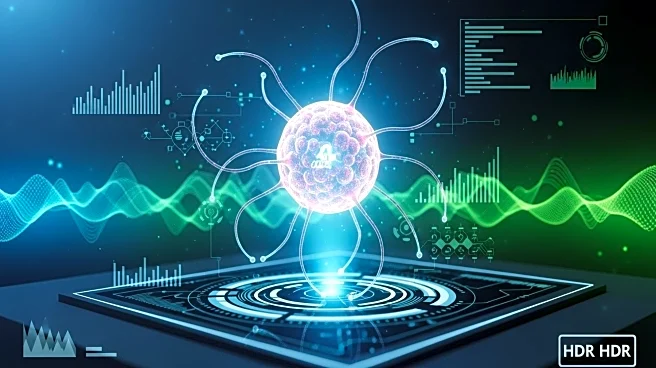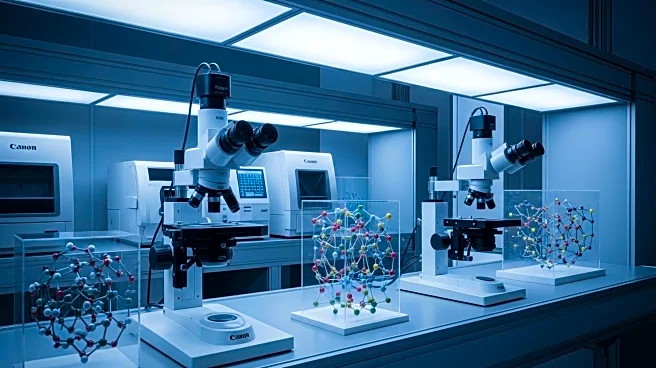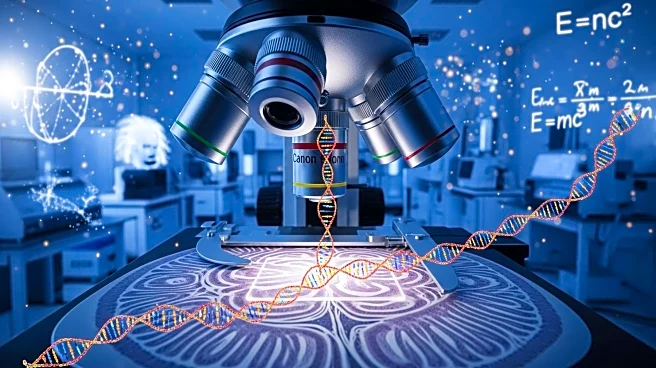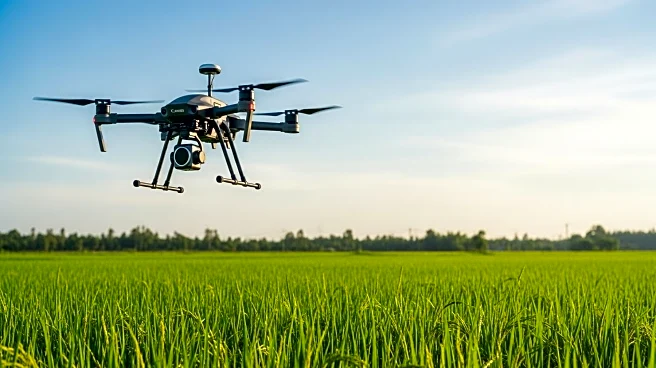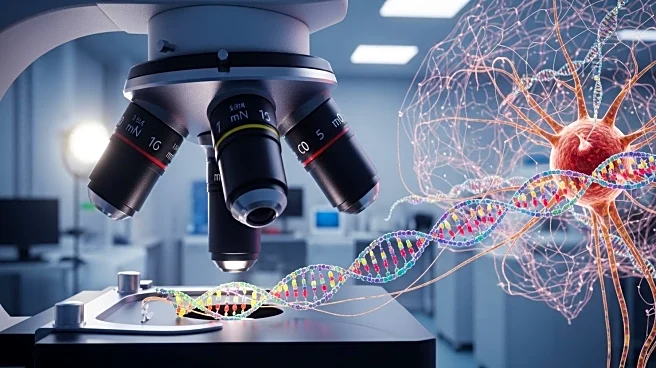What's Happening?
A recent study published in Nature explores the use of DNA-origami nanorobots in super-resolution microscopy. These nanorobots are constructed using DNA origami techniques, where single-stranded DNA is folded into specific shapes with the help of complementary 'staple' strands. The study demonstrates the potential of these nanorobots in biological imaging and therapeutic delivery, particularly through a smartphone-based microscope. The research highlights the ability of these nanostructures to act as nanoscopic rulers for DNA-PAINT, enabling single-molecule detection and super-resolution imaging.
Why It's Important?
The development of DNA-origami nanorobots represents a significant advancement in the field of microscopy and imaging. By enabling super-resolution imaging with a low-cost, portable device, this technology could democratize access to advanced imaging techniques, making them more accessible to researchers and clinicians. This could lead to breakthroughs in biological research and medical diagnostics, particularly in resource-limited settings. The ability to perform high-resolution imaging with a smartphone-based microscope also opens up new possibilities for point-of-care diagnostics and personalized medicine.
What's Next?
Future research may focus on refining the design and functionality of DNA-origami nanorobots to enhance their imaging capabilities further. There is potential for developing more sophisticated nanostructures that can be used in various applications, including drug delivery and disease detection. Additionally, the integration of this technology into clinical settings could revolutionize diagnostic procedures, providing more accurate and timely results. Researchers may also explore the use of these nanorobots in other fields, such as environmental monitoring and materials science.
Beyond the Headlines
The ethical implications of using DNA-origami nanorobots in medical and research applications should be considered. As with any emerging technology, there are concerns about privacy, data security, and the potential for misuse. Ensuring that these technologies are developed and used responsibly will be crucial in maximizing their benefits while minimizing risks.


